Travel
--and our absurd transportation system?
(last worked on: March 2nd, 2025)
You're at: https://57296.neocities.org/travel.htm
Fast find>> Change, Cars of the future, Aerodynamics, MPG, 35mph, A British study, Mr. Toad, An eye hazard, NEVs
Star Trek / The Next Generation was the high point of popular, USA social/spiritual culture
--which we've passed by (for obvious, Ferenge-ish reasons). TNG's warp speed travels was an interesting backdrop, a lure.
"As of January 1, 2013, Star Trek: The Next Generation has been nominated for 85 different awards, of which it has won 31. Despite the series ending in 1994, it has continued to win awards in special recognition of the series, and for the DVD releases." --Wikipedia, at:
> https://en.wikipedia.org/wiki/List_of_awards_and_nominations_received_by_Star_Trek:_The_Next_Generation
![]()
** David Zipper's article: "How Finland Put Traffic
Crashes On Ice", pretty much says it all. "I asked a group of Helsinki
officials what role information technology has played in their success
reducing crashes in recent years. 'Zero', replied Palomaki: 'We
simply slowed down the cars'." --See:
https://www.bloomberg.com/news/articles/2022-10-07/helsinki-finland-s-amazing-traffic-safety-record-explained
![]()
* The emphasis of this web page has been on safety,
economy, and rationality. Only touched upon was the contribution of vehicular
speed to climate change. Vehicles built for low speeds (such as those considered
to be "NEVs"^) have a much lower "carbon footprint",
even with an internal combustion engine. As electric vehicles, the battery
pack might be 1/4th the weight and cost --and: 1/4th the disposal burden.
(At this writing, lithium-ion batteries are only 5% recyclable, whereas
traditional automotive lead-acid 12 volt batteries are 95 to 99% recyclable.^)
![]()
That said, I must witness to the real problem: it's
our growth mentality. The Earth is already struggling
to support at least 3 times too many people --for its life sustaining resources.
![]()
^ Our little e-group briefly discussed recent municipal
initiatives to eliminate parking space mandates for new development projects
--and how that is likely to further shut down our urban cores. One area
of agreement: the potential of small NEVs to relieve
congestion and multiply urban parking capacity, simply by driving 3 of
them athwart the space used to "parallel park" an SUV. Such parking might
be offered free, so as to encourage the adoption of NEV commute vehicles.
(Providing there are ample 35 mph thoroughfares leading into cities.) (Given
shorter cars and the old "one car length spacing per 10 mph of speed" admonition,
"count the cars passing the post" roadway capacities would diminish by
less than 20% --plus: far fewer cars would be involved in disabling collisions.)
![]()
* I've been neglecting the (political left's) holy
grail of "mass transit": stinking diesel busses and the far more costly
(to build, maintain and to operate per mile) "light rail" systems.
* During my last ride on a public bus I sat next to an old fellow who had clearly and fragrantly crapped in his pants. In a better society I'd have called social services and seen to it that he got a welfare check --or the driver would have called ahead for such assistance. However, this being the real world, I simply stopped taking the bus. (There were other factors too. It was in the news that a street gang was perpetrating stuff on the passengers of that bus route.)
* Have you taken an honest look at the actual operating costs and carbon footprints of mass transit --per passenger mile? Stop-and-go city busses get about 5 miles per gallon, so if you can get a handle on ridership on a given route (averaged day and night), there's your passenger miles per gallon. This compares to about 50mpg/p for well loaded airliners --and I see an estimate that well loaded rail transport is about 3 times more energy efficient than (probably 1.5 passengered), traditional automobiles.
* Such comparisons are difficult and often unconsciously
disingenuous. The horrendous costs per mile to build light and heavy rail
are justified on the basis of social investment and the simple running
cost per passenger mile --ignoring the maintenance of rails and rolling
stock, ignoring the amortization of the original investment, and perhaps
the devestation and the displacement of communities which securing the
right-of-way required. On the other hand, private transportation (cars)
might be criticized by the same people on the basis of their high investment
and carbon costs --just to move one person's ass across town, when higher
efficiency might actually be the case. That would be to say that:
"one ton of metal moving one ass directly from point A to point B, is more
efficient than 20 tons of metal moving (say) 6 asses from their A to Bs
--via a much longer, circuitous route, perhaps including a transfer and
one or two long waits --on a cold and rainy day.
![]()
* Our system of roads, speeds, the mutual infringement
of cars, pedestrians, trucks, pedal power, locomotives --separated by painted
white lines --is nuts.
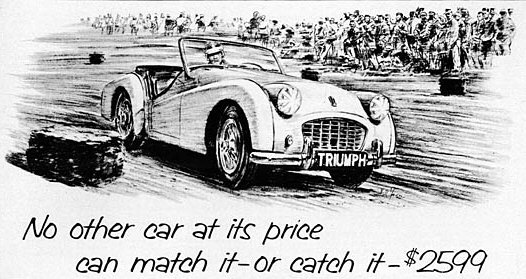

For those who don't closely follow the development of
performance cars, Tesla's second generation Roadster was originally scheduled
for production in 2020, the first thousand or so being earmarked for those
who've paid in advance, then to those who've invested a $50,000 down payment.
(The first generation Roadster, the one that went into orbit around the
Sun, was Elon Musk's personal 2008 model --built on a Lotus chassis.)
* I've been 20+ years out-of-date for not mentioning
the vehicle classification: "neighborhood
electric vehicles". NEVs are a ready made answer to my laments and
suggestions here. Many of the crash-worthy requirements of standard cars
are obviated by restricting them to 25mph. (They're usually legal to run
along on parkways signed for 35mph.) These vehicles might seat up to 4
people, can be fully enclosed, and often feature basics like wipers and
defrosters. Their previously limited range (maybe 30 miles with lead-acid
batteries) is now augmented with lithium-ion batteries.
* For a stouter machine, check out the $4000 Chinese "Wuling Hongguang Mini" EV, which can manage 60mph. (It's not been imported yet.)
* I'm expecting that the current run of $25,000 to $30,000+ EVs are going to get laid low when their 100,000 mile warranteed battery packs time out --or get damaged ahead of time in a not covered accident --as happened to a Tesla Model 3 owner. At this writing, all Chevy "Bolt" EVs have been recalled due to battery fires. The cost to GM has been estimated at $11,000 per vehicle to replace their battery packs, for a total bill of $1.8 billion. Be my guess that retail replacement (out of warranty) will cost a tad more.
* The aviation industry is toying with electric power planes, but for flying, they don't want lithium batteries --even as cargo. NASA has a program and a dedicated budget to come up with another battery technology. If that's a success, perhaps the new batteries will power cars as well.
* Another big problem: lithium batteries are currently only about 5% recyclable, and that's to extract the cobalt (but: Tesla is developing a lithium battery that doesn't need cobalt). However, standard lead-acid car batteries are 95% to 99% recyclable. Were we to restructure our mobile lives to move (say) 30 miles per day (or less) at 30mph --how safe, quiet and efficient would be our private vehicles.
^ Unfortunately, lead-acid batteries
only last about 2000 cycles (with good maintenance). In heavy use, there's
another problem. The experience with warehouse forklift fleets has been
that their discharged lead-acid batteries not only require about 8 hours
to recharge, they then need an additional 8 hours to cool down before use.
The input-output energy efficiency must suffer.
![]()
In the news: Who knew!? Mixing
people standing on little electric scooters with big city traffic is resulting
in lotsa accidents. --Gosh-gee!
![]()
* Dale Maharidge wrote an excellent
article for Harper's magazine concerning the nation's crumbling
secondary roads and bridges. It's my expectation that overlaying our deteriorating
transportation infrastructure with "self driving" cars will prove to be
a Donnybrook. As of January, 2020, these vehicles can't see and avoid
potholes.
* We keep seeing news reports about accidents as self-driving cars are being road tested, as well as Tesla's cars in "auto-pilot" mode. I await drawn out court battles over who's responsible, findings that the (deep pockets) manufacturers are at fault, bigga recalls, and finally: the handing back of the reigns and the liability to human driver/owners.
* As of 2018, an accumulation of accidents and deaths brought the road testing of self-driving cars to a halt in several states. It turned out that one of these vehicles ran into a concrete divider after audio and visual warnings failed to alert the human at the wheel (who was streaming a movie!) that things were getting out of control. (If I recall the news of the day: there was a suggestion that the highway's painted white lines were out of specification --and that the crash was followed by run-away shorting and flash ignition of the lithium batteries. The fire department had to stand by, hesitant to direct water onto the burning car's carcass until Tesla engineers could come and disable its electrical circuits. That strikes me as a jobs program for lawyers.)
I suggest that sensors and computers are simply not up to the wary alertness and psychology it takes to navigate a vehicle at speed, to deal with the mental states of others on the road, to anticipate, to creatively and even unconsciously avoid hazards. And if the driver's attention isn't supposed to wander, then just what is the point of a "self-driving" car?
* Aside from attending to the complexities of programming
a self-driving car, even the far simpler tasks of engineering things like
air-bags that don't kill us and steering wheels that don't come off has
proven to be a challenge for car makers. Ford had to recall 1.4 million
cars in 2018 because their steering wheels were coming loose --some of
them coming completely off --at speed. (Of course, when Ford starts fielding
fully self-driving cars, we won't need no stinkin' steering wheels, right?)
![]()
* Bullet trains: Considering
our society's unwillingness to maintain bridges and roadbeds, plus recalling
railway accidents in which engineers failed to slow down for curves, it's
hard to imagine our (USA's) culture operating European and Asian style
"bullet" trains. So: why not simply governor trains to run at modest speeds?
![]()
Since the kinetic energy of a collision is proportional to the square of the miles per hour, an accident at 30mph is inherently 4 times worse than one at 15mph. At 45mph, it's (3 squared =) 9 times worse.
* Should you be enamored of "extreme sports", the "need for speed", the thrill of risk taking --then this web page is probably not for you. It's a gentler crowd that I encourage to seek out and build alternative communities (new cities, "intentional", "gated"/CC&Rs) and lifestyles. I quite discourage vain attempts to impose such pastoral ideas upon thrill seeking mainstream Americans.
* “I know kind, well-bred, and considerate people who, as soon as they feel the steering wheel in their hands and the gas pedal under their foot, are seized by an automotive frenzy,” wrote Adolf Schmal, an Austrian writer, in his handbook for motorists, published in 1913. See more (and the story of "Mr. Toad") at:
> https://lithub.com/meet-the-real-life-inspiration-behind-mr-toad/
Your feedback goes to: craig er oochi a t
outlook dotty com
(Hopefully, that's bot proof).
![]()
Let's start with some extremely
"counter-culture" notions.
* Travel, change, "growth" and even "progress" -- are not inherently "good things". Those are hard arguments to make, since we live in a culture/society that's so desperately in need of fundamental changes and progress.
Glimmerings of such understanding are among us.
Recall the familiar: "happiness is in your own back yard", along with that
old fashioned admonition against "change for the sake of change". (Yes:
we all feel needs, both practical and recreational, to venture some distance
away from home. I'm talking matters of degree and range --of course.)
![]()
* Perhaps the first argument I hear against drastically
reducing our speed limits is: "we don't have the highway capacity".
However, being mindful of those public service announcements that we should
count a second's worth of travel between vehicles (or a car length between
for each 10mph --about the same), then --nominally-- a capacity of something
like 86% as many cars per hour should pass a given point along a highway
at (say) 30mph as at 60mph. (The math here is for 16 foot long cars.) More
likely, and over time, vehicle miles (if not hours) would considerably
diminish (due to closer destinations), such that highway capacity would
actually increase.
* Dissent #2 (and maybe it's #1): "it would take twice as long to get there". However: that there "there" --the destination, is pretty arbitrary --is it not? So just why did you decide to build and drive to your cabin on "the lake" for the weekend --instead of somewhere further --say: nearer to Canada? Answer: you picked a nice destination that was do-able --at 60/whatever MPH. But then: why not 120mph? With more investment in highways, vehicles and fuel, is that so unreasonable? Would Canada then be reachable from your home? In 1939 it was expected that we'd be routinely driving at 100mph by the 1960s.
Obviously, if it had long been a "given" (and accepted)
that the highway speed limit is (say) 35mph^, then you'd
have simply built a cabin on a lake that was nearer to home --and maybe
have driven to work for a company at about half the distance you now commute.
There's a bonus: you'd stand a much better chance of driving to those destinations
and
living to a ripe old age --with lower life and car insurance premiums along
the way. (I'm originally from Minnesota, which has lakes, lakes, lakes,
everywhere to choose from --and hoards of mosquitos.)
![]()
The Cars of the Future
Those in attendance at the Panama-California International Exposition of 1915-16 experienced the tranquility of Clyde Osborn's "Electriquettes":

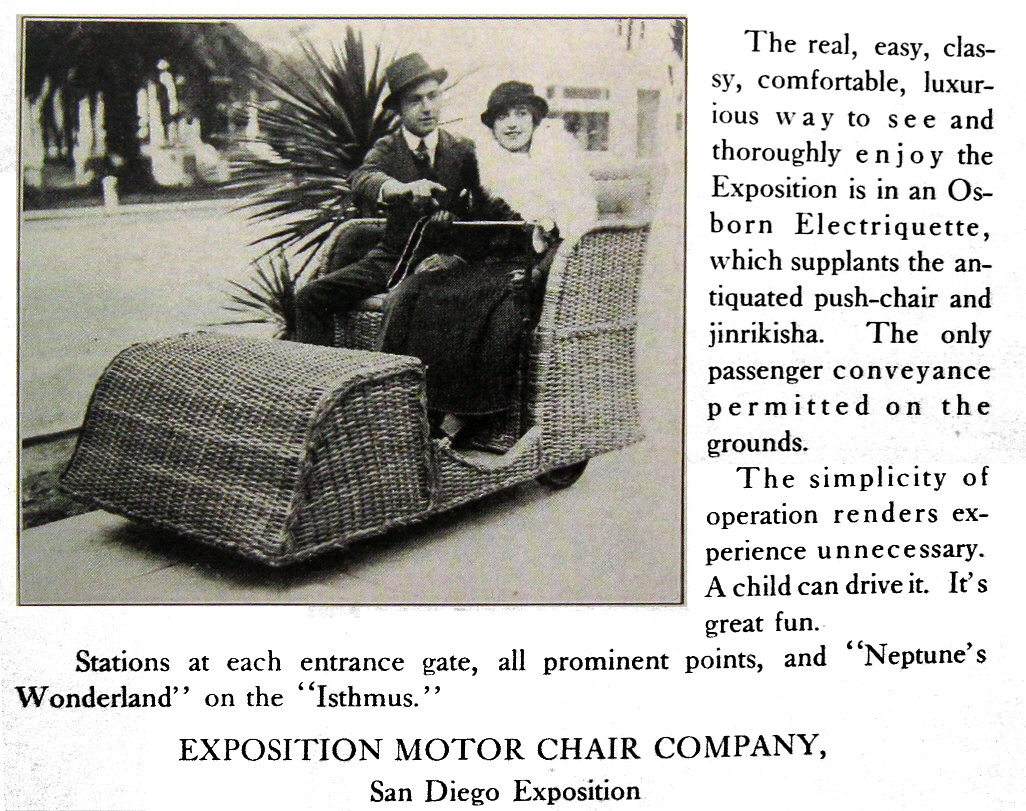

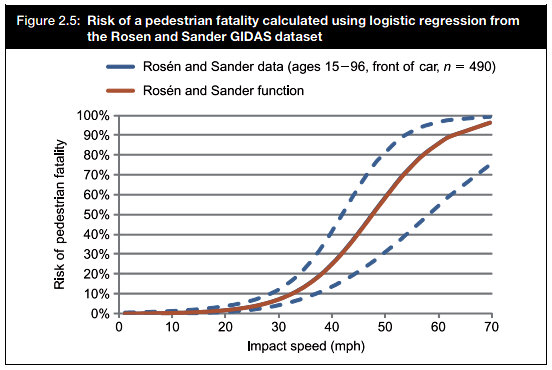
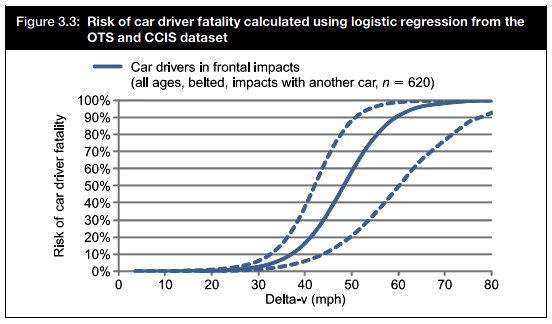
* ProPublica’s Lena Groeger used data from the AAA Safety Foundation to chart similar statistics and came to a similar conclusion.
* To be clear: I'm seriously advocating for greatly
reduced speed limits --which only seems to be an extreme position
--because our society is so nuts about speed and risk taking.
![]()
* There are, of course, natural/physical speed limits
--like the sound barrier. We can run and easily bicycle at 15mph. Maybe
we can sprint close to 20mph. If this was the limit for most urban driving,
bicycles could keep up, while pedestrians, stray children and pets would
stand a better chance of survival.

Below 50mph, the profile and streamlining of a vehicle is much less important, so boxy, slower vehicles could be designed for comfort (shoulder/hip room, luggage capacity, rain and snow shedding visors over the windows), as well as having better engine accessibility --partly due to needing a much smaller engine/motor. (Perhaps you could pull an engine block by hand.)
* At "parkway speed" (35mph^ and below), air flow over a car ceases to be so turbulent. Open your windows. Listen to nature's birds and crickets. (Hey: try that sometime. It's very pleasant on a warm summer evening.)
At 35mph and below, wild creatures stand a fair chance of getting out of the way, so road kill goes way down --and ain't that nice.
* Not only could engines be significantly smaller at modest speeds, the whole drive train, wheels, tires, and chassis weight gets sharply reduced, so cars become more affordable to build and to purchase --as well as to drive.
^** Surprise(!) --it's already been
done! In May of 1942 a national speed limit of 35
MPH was decreed in support of the war effort to conserve tire rubber and
gasoline. The State of Utah kept track of the results: auto accidents decreased
by 35%, traffic deaths were cut in half, and this was despite a 5% increase
of vehicles on their roads and highways over the same period of time (1941
to 1943).
![]()
** Of course: fuel consumption goes
down with speed, and the more so if cars are designed for a low speed range,
since MPG goes up with reduced vehicle weight (a factor which dominates
at speeds below 50 MPH).
More "car talk" *here*.
* Portraits of American Presidents -
copyright NBC News/Questar - 1992
![]()
Another safety issue:
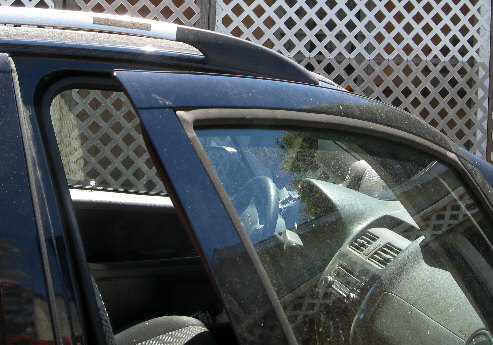
![]()